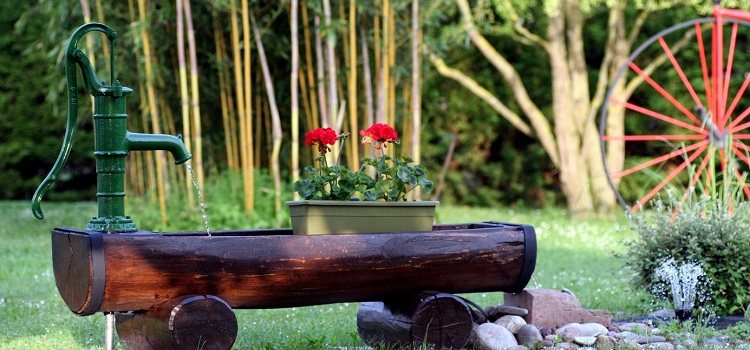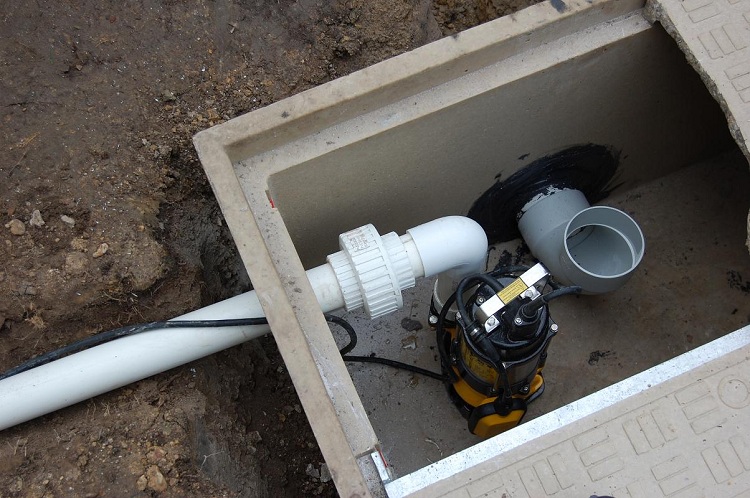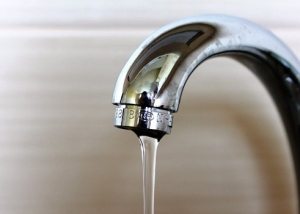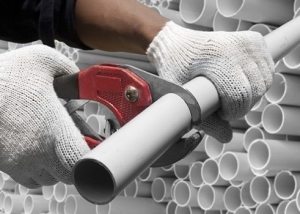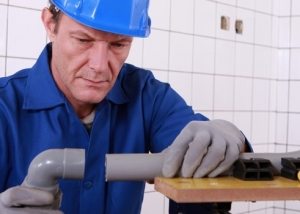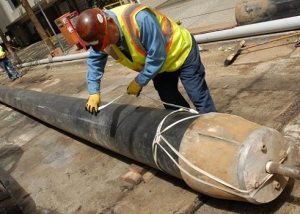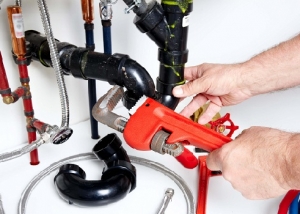For a private house, a very important aspect is its water supply. To create comfortable living conditions, you must have constant access to water. The most popular way of water supply in settlements where there is no centralized water supply system is to produce water using a well. The well in the house is an excellent solution that provides the convenience of extracting water with its subsequent use for various needs. This type of water supply has a number of features and positive qualities.
Content
Well Benefits
Various options are used to supply water to private houses: a central water supply, a well or a well. Well operation has several advantages:
- Full autonomy in the use of water extraction equipment. Owners of such sources have the opportunity to operate the well and spend the required amount of water at their discretion.
- Environmental indicators of water. The source, in contrast to the centralized water supply network, is characterized by the quality of water, which is extracted at a sufficient depth and does not have harmful impurities.
- Economic expediency. Drilling and installing a source is not cheap, however, these costs pay off, because there is no need to pay for water for utility bills.
Varieties of wells. Their positive and negative sides
To install water supply in private homes, two types of sources are used: artesian and sand. The sand well is more suitable for water supply of a small summer cottage, where the water flow is within 1.5 cubic meters. m / hour. The main advantages of using such wells are: relative ease of installation, low cost. In order to equip a sand well, large-sized equipment is not required. A variation of such a well is the Abyssinian well.
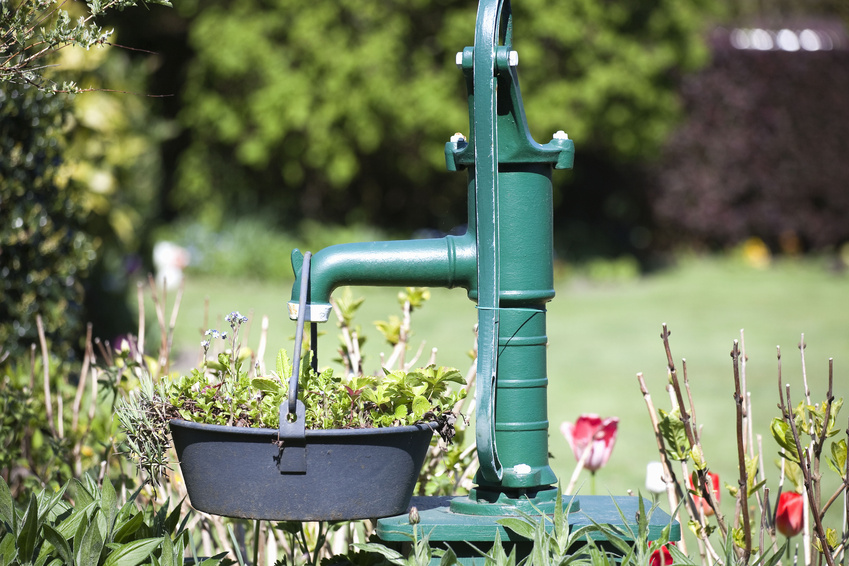
A shallow well will fully provide a homestead in which temporary residence is supposed, for example, a summer residence
However, for a private house in which someone lives on a permanent basis, a sand well will not work. Its depth rarely exceeds 50 m. Water from such sources is not clean and can have many harmful impurities and compounds (sand can release metals into the water, which aggravate the water hardness). Therefore, it is not suitable for drinking water. The average indicators of water production by such wells are small - about 500 liters per month. Service life averages 10 years.
The best option for water supply of a private house in which people live all year round is an artesian well. This type has a depth of 100 meters or more. Indicators of water production can reach up to 10 cubic meters. m / hour. The quality of water produced by such a well is high. At this depth, the waters are purified naturally. They practically do not contain harmful impurities and pathogenic bacteria and are environmentally friendly. In fact, drinking water from such a well is not only possible, but also necessary, because it is much cleaner and more useful than ordinary tap water. The service life of an artesian spring can exceed 50 years.
Important! Specialists will determine the type of soil in your area and carry out all the necessary calculations for the correct installation of the well. Installation of an artesian source by professionals will save you from problems during operation.
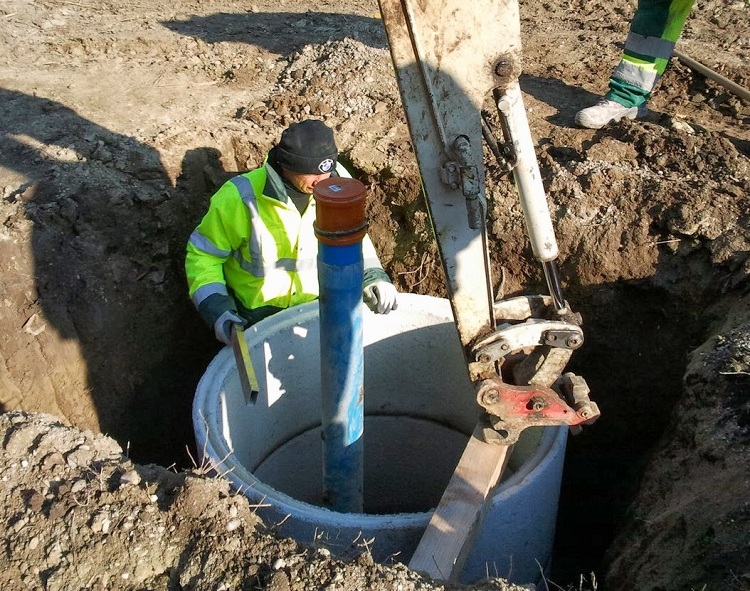
For the installation of wells with a depth of more than 50 meters, it is more expedient to use the technique
The sand well is easy to install and you can do it yourself if you wish. The artesian well is much more complicated in terms of installation. In this case, specialists can not do. The cost of installing such a well is quite high, but such work quickly pays off.
Which pump model to choose?
For sources, two types of pumps are used: rotary submersible and centrifugal borehole. Popular among the people is a submersible pump.
The operation of the source depends on the choice of the pump for the source. To choose the right pump, which will provide a constant supply of water without interruptions, you should pay attention to a number of important aspects:
- well depth;
- volume of produced water (highest rate);
- minimum water pressure in the well;
- general indicators of water flow from the well.
When buying a pump, be careful and it is advisable to familiarize yourself with the following characteristics of the device:
- The pressure. The pressure created by the apparatus for delivering water to the surface. It is calculated in meters.
- Consumption. The volume of water produced per unit of time. It is calculated in cubic meters per hour.
The amount of energy spent on the operation of the pump depends on the flow rate and pressure. Accordingly, the higher these indicators, the more electricity will be spent on ensuring the functionality of the device. If the water flow increases, the pressure indicators decrease. If you eliminate unwanted losses in the pipeline - this will help to cope with its overload. The most popular pumps are those that have a pressure of 60 to 80 meters and a flow rate of 4 cubic meters. m / hour.
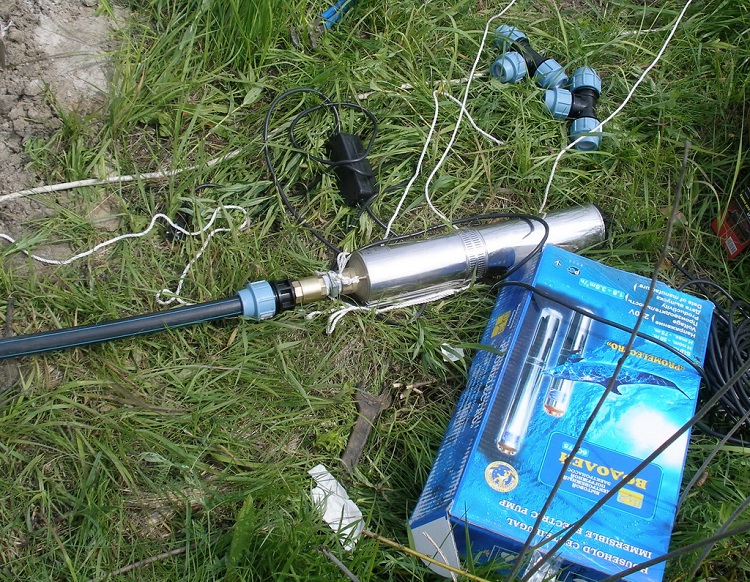
The choice of pump type and model depends on well depth, water flow, casing diameter and other factors
Note! It is important to note that in some settlements, power outages and power surges often occur. In such cases, the device is connected to the power supply through a special stabilizer.
Rules for the supply of water from the well to the house. How to route a pipe from a source?
Many people, when installing sources, are asking themselves: how to route pipes from a well to a house? To do this, remember some important rules:
Pipes should run below freezing in your type of terrain. To carry out this operation, it is necessary to calculate and dig a channel of the required depth. A pipe is laid at the bottom of the channel. As a rule, pipes made of metal plastic are used. For this, a 32 mm product is usually used. The pipe may be HDPE, but such pipes are very sensitive to temperature extremes. Polyethylene is not reliable in this case and may crack or burst.
Note! It is very important to remember that the use of hoses as a water supply from the well to the house is strictly prohibited. Water supply from the well should be carried out only through pipes that have all the necessary technical characteristics.
In places where the pipe is lifted from the ground, conditions are created that can disable it. In this case, you can secure the part by insulating it with insulating material. If it is not possible to bring the pipe underground, then you can run the pipeline on top. At the same time, the pipe is slightly covered with soil and it is recommended that a self-regulating heating cable be installed on it. Such a connection can be additionally insulated and placed in a protective corrugated pipe, which will provide reliable insulation of the network from external influences.
Together with a water pipe, it is customary to carry out a power cable, which ensures the operation of the pump. Such a wire should have 4 cores and a cross section of 2.5 mm and above. The box, which is responsible for the power supply, must be mounted in a warm and dry room, for example, inside the house. Installation of the box must follow all safety rules. It is recommended that you prepare a place for her in advance.
The main elements of an autonomous water supply system
Structures that provide autonomous water supply have many separate elements and devices that perform various functions. Thanks to their work, an uninterrupted supply of water from the source is ensured.
The main elements that make up the well:
- accumulator. A very important element that provides the necessary level of pressure in the structure. In addition, it serves as a supply of water in the system.
- relay. Due to the pressure, it controls the power supply of the pump for the well. The dry type relay when water disappears from the well interrupts the supply of electrical energy to the pump.
- starting protector or ROM. It is usually sold complete with a pump. Performs the function of starting the pump motor.
- coarse filter. It has a barrier function. It collects large particles and prevents them from falling into water.
- flask with an integrated cleaning cartridge. Carries out more thorough and deeper water purification.
- manometer. It is necessary in order to provide control over the pressure indicators in the well.
Water supply of a private house or cottage can be done with your own hands. However, it is safer to invite experts on these issues. Installing and supplying water to houses from wells is a serious matter, and if you are not confident in your abilities or do not want to carry out all the necessary calculations and calculations, then it is better to rely on professionals. Installation of downhole equipment should be carried out in accordance with all standards and technical rules. This is the only way the equipment will last more than one year and will supply your house and land with ecologically clean, high-quality water.
